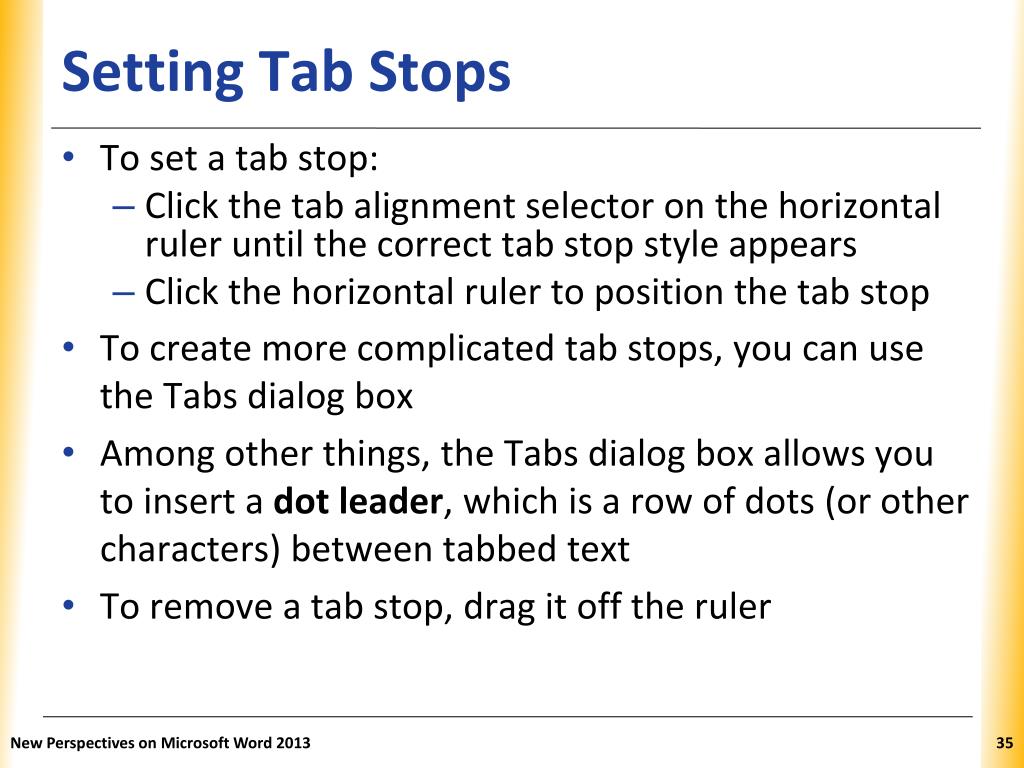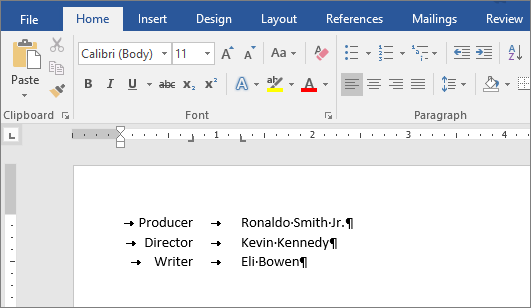


To see your tab stops, display the ruler. As with word spaces, also avoid using sequences of tabs to move the cursor around the screen. Avoid relying on the default tab stops-they undermine the goals of control and predictability. To get the most out of tabs, you should set your own tab stops. But this default behavior also suggests that what the tab key does is move the cursor a half inch at a time. These default tab stops exist so that something happens when you type a tab in the new document. A new word-processing document has default tab stops every half inch. The tab is not as vital as it once was, but word processors still shortchange its capabilities.

So you’ll usually want to set tab stops before inserting tabs in the text. Be aware that adding your own tab stops wipes out the default ones. Word and Pages do not display their default tab stops on the ruler (for no good reason). For a true tabular layout, use a table, not tabs. If you need horizontal space at the beginning of a paragraph, adjust the first-line indent. These days, the tab is used only for inserting horizontal space in the middle of a line. A tab stop marks a location typing a tab moves the cursor to that location. Tabs and tab stops still work the same way. This allowed typists to create columns of text or numbers, also known as tabular layouts (hence the name tab). On typewriters, the tab key moved the carriage to a fixed horizontal position, marked with a tab stop. Tabs and tab stops For horizontal space in the middle of a line


 0 kommentar(er)
0 kommentar(er)
